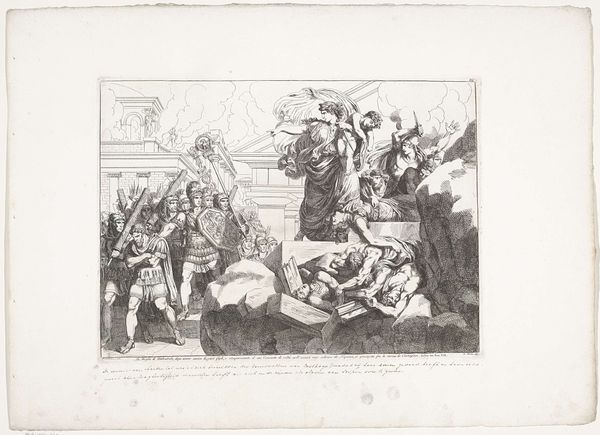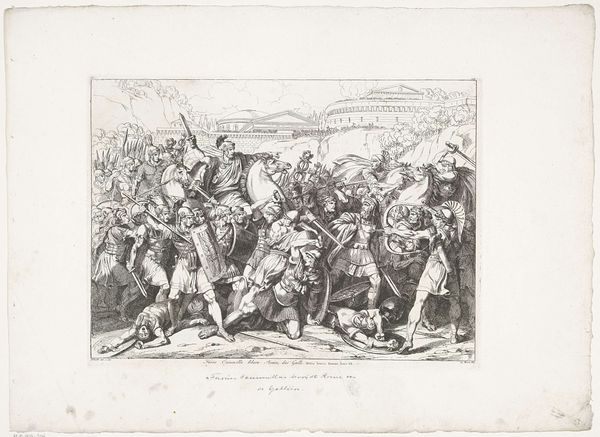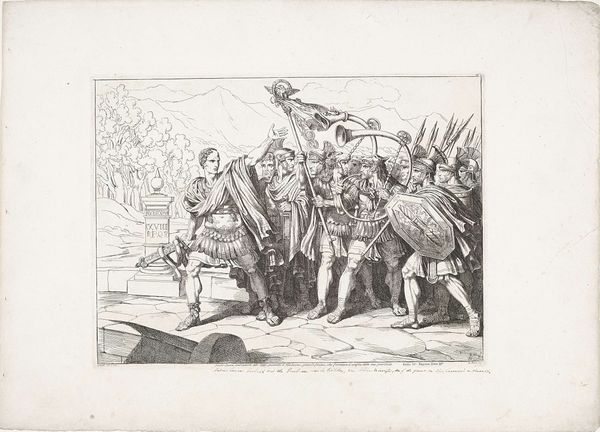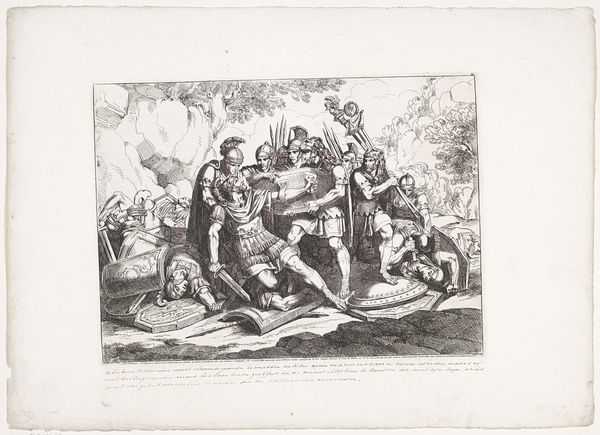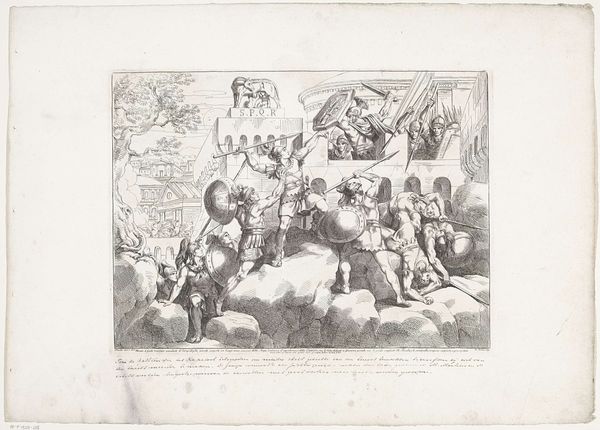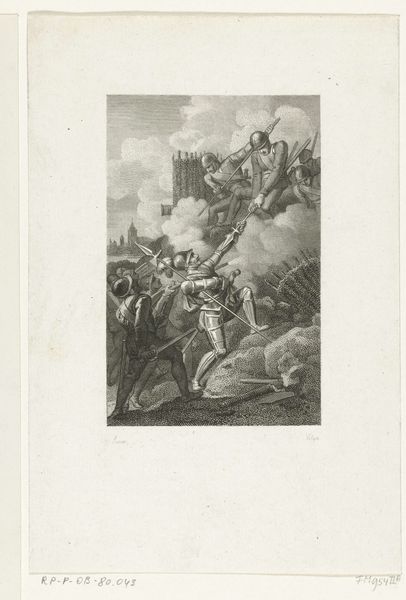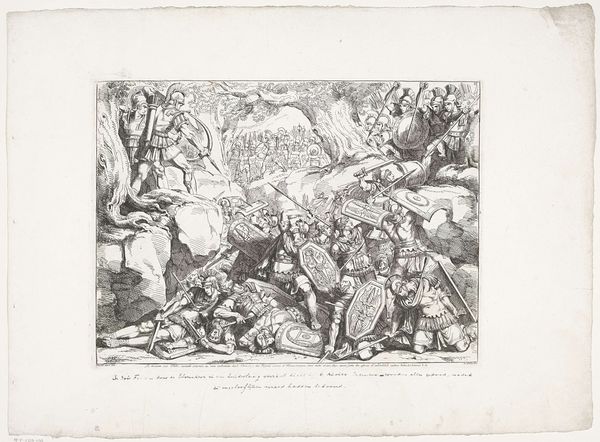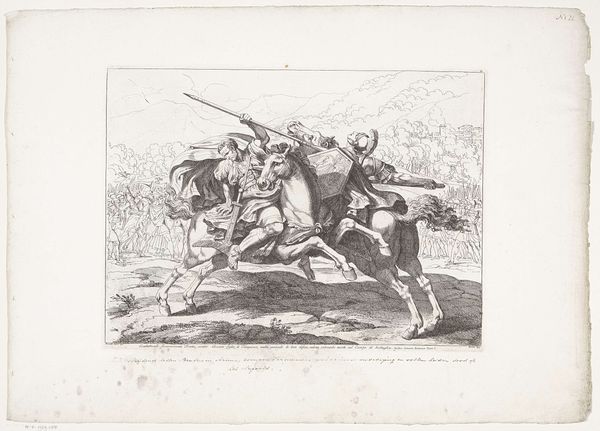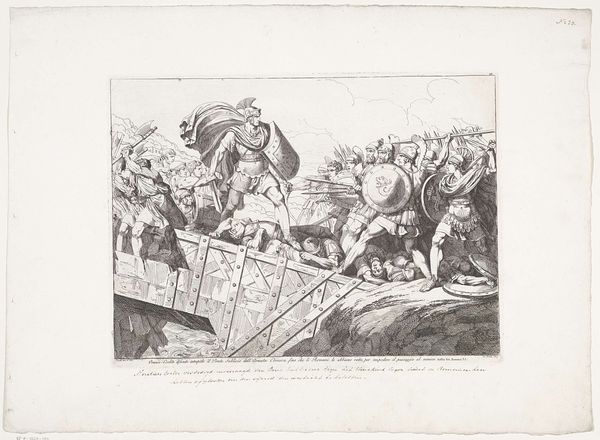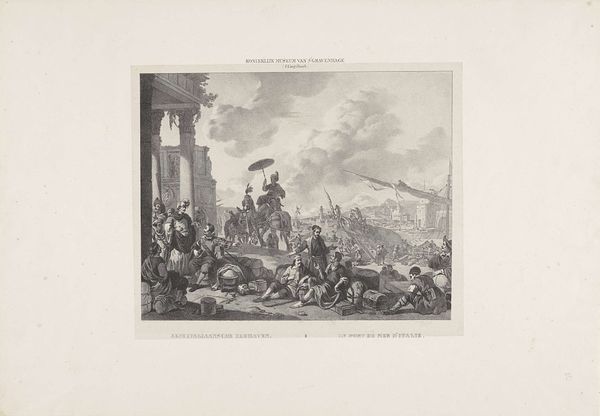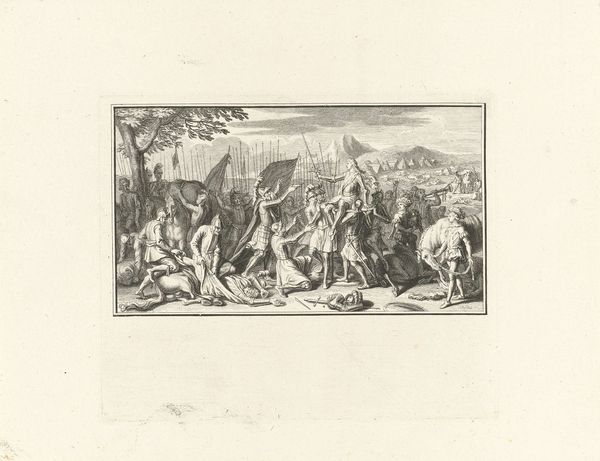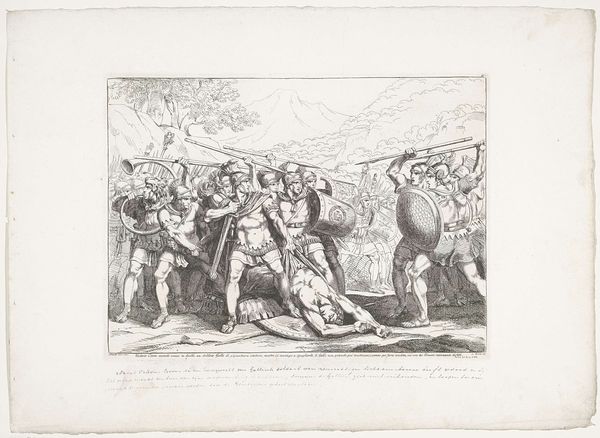
drawing, print, etching
#
drawing
#
narrative-art
# print
#
etching
#
classical-realism
#
figuration
#
history-painting
#
academic-art
Dimensions: height 318 mm, width 430 mm
Copyright: Rijks Museum: Open Domain
Editor: Here we have Bartolomeo Pinelli's etching from 1818, "The Death of Romulus." The scene is intense! It has a very dramatic and chaotic mood, and seems almost theatrical. How do you interpret this work? Curator: It's a potent image, isn't it? Consider the upraised arms, the lightning. The iconography strongly evokes sacrifice and apotheosis, but it's shrouded in violence. How does that duality strike you? Editor: It's confusing! Apotheosis is usually celebratory, not... murderous. So, what's Pinelli trying to convey with this particular image and depiction of Romulus? Curator: The imagery echoes familiar narratives: a hero's death, perhaps a leader betrayed, which transforms into something divine. Note the robes—are they celebratory or concealing? Perhaps Pinelli's comment hinges on the symbolic blurring of these events: are they divine act or something more sinister, motivated by something corrupt? Editor: So the symbolic chaos is intentional? Does it hint at underlying tensions in the story of Romulus's death itself? Curator: Precisely! The visual symbolism doesn’t provide closure, and that encourages questioning. The print challenges the traditional narrative of a founder's noble end. Editor: That's fascinating, how Pinelli uses classical imagery to sow doubt. I hadn't considered how intentional the symbolic ambiguities could be. Curator: Indeed. Pinelli creates not just an image but a critical engagement with history, reminding us that even foundational myths are open to interpretation. A complex legacy that echoes through time!
Comments
No comments
Be the first to comment and join the conversation on the ultimate creative platform.
